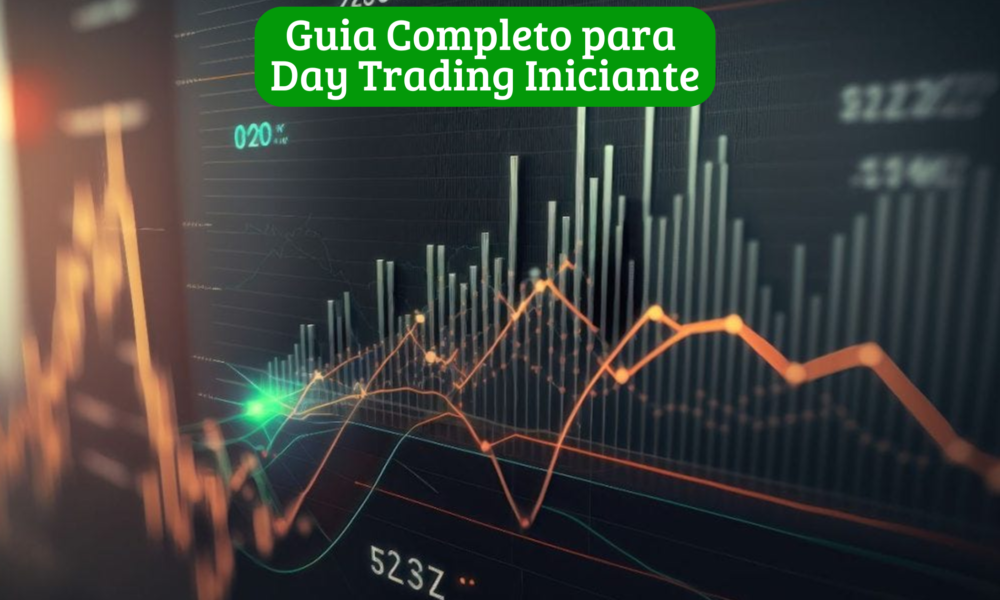What is Day Trading and How Does it Work? A Beginner’s Guide – Day trading is a strategy for trading financial assets where positions are opened and closed on the same day. This practice is common in stock markets, futures, forex, and cryptocurrencies. The main idea is to capitalize on small price fluctuations within a single trading day. For beginners, understanding the fundamentals of day trading is crucial to minimize risks and maximize gains.
What is Day Trading?
Day trading involves the quick buying and selling of financial assets throughout the trading day, aiming to profit from intraday price movements. The goal is to close all positions before the market closes, avoiding exposure to price movements overnight. This type of trading requires a deep understanding of the markets, technical analysis, and discipline.
I’m going to show you one of my methods for FREE that helped me make 819.45% profit using only Bitcoin and other cryptocurrencies
How Day Trading Works
Day trading strategies are designed to exploit short-term price movements. Traders rely on market data and technical analysis to predict price directions. The key to success in day trading lies in executing trades quickly and efficiently, using a combination of risk management tools and market indicators.
Day Trading Basics
Choosing a Trading Platform
The first step in day trading is choosing the right platform. Ensure the platform you select offers technical analysis tools, detailed charts, and quick order execution. A reliable platform can make a significant difference in the speed and accuracy of your trades.
Understanding Charts (#Charts)
Charts are essential tools for any trader. They help visualize price behavior over time. There are different types of charts, such as line charts, bar charts, and candlestick charts. Each chart type provides a unique perspective on price movement, and learning to read them is key to successful day trading.
Technical Analysis
Technical analysis involves studying past price data and volume to predict future movements. Tools like moving averages, Bollinger Bands, and the Relative Strength Index (RSI) are commonly used to identify trends and reversal points. Successful traders use technical analysis to make informed decisions based on historical data and market signals.
Risk Management
Risk management is crucial in day trading. This involves setting a maximum amount you’re willing to lose on a single trade and determining what percentage of your capital to risk per trade. Effective risk management can help protect your investments and minimize potential losses.
Common Terms
- Stop Loss: A stop loss order is a tool that allows traders to limit their losses in a trade. By setting a stop loss, you instruct your platform to sell an asset if its price drops to a certain level, protecting your capital from significant losses.
- Take Profit: Similar to stop loss, a take profit order is set to ensure you lock in profits when the price reaches a predetermined level. This helps secure your gains before the market reverses.
- Leverage: Leverage allows you to trade with more money than you actually have in your account. While it can increase potential profits, it also amplifies the risk of losses.
- Trading Volume: Volume refers to the total number of units of an asset traded within a specific period. High volume can indicate strong trends or upcoming price movements.
- Chart Patterns: Patterns such as head and shoulders, triangles, and flags are recurring shapes in price charts that can signal future price movements.
Best Practices for Beginners in Trading
- Continuous Education: Stay updated with market developments and continue learning about new trading strategies and techniques. The more knowledge you have, the better prepared you’ll be for success in the markets.
- Practice with Demo Accounts: Before starting to trade with real money, practice with demo accounts to build confidence and understand the market dynamics without risking your capital.
- Develop a Trading Plan: A solid trading plan should include your goals, entry and exit criteria, and risk management rules. Stick to your plan and avoid making impulsive decisions.
- Discipline and Patience: Avoid emotional decisions. Maintain discipline and wait for the ideal trade setups based on your analysis.
- Keep a Trading Journal: Record all your trades, including reasons for entries and exits. This will help you identify patterns and improve your strategies over time.
Conclusion
Day trading can be a lucrative way to trade financial assets, but it requires knowledge, discipline, and effective risk management. This guide provides an introduction to the basics of day trading, common terms, and best practices for beginners. By following these essential tips, you’ll be better prepared to embark on your day trading journey with confidence.



